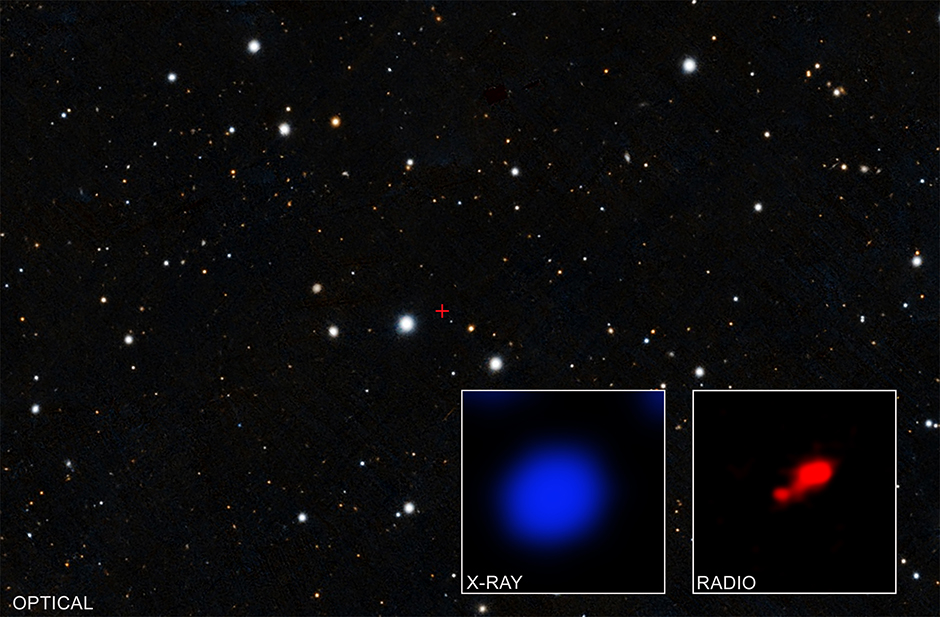University of Miami astrophysicist Nico Cappelluti is fascinated by the cosmic phenomena of supermassive black holes and the nature of dark matter. Recently, Cappelluti and a team of international researchers discovered a black hole shrouded in a thick cloud of gas, indicating that the cosmic entity dates back to the early years of the universe.
Supermassive black holes grow by pulling in material from a disk of surrounding matter. The growth produces large amounts of radiation in a very small region around the black hole, which scientists call a "quasar."
“We are slowly uncovering the mystery around the growth of supermassive black holes in the first epochs of the cosmic history,” says Cappelluti, an assistant professor in the Physics Department. “This discovery is further evidence that these giants grow hidden by a thick cocoon of dust.”
The research team was originally observing quasars in outer space when they discovered that one of the quasars, PSO167-13, which was first located by an optical-light telescope in Hawaii, was highly obscured by gas.
The team observed PSO167-13 for 16 hours using NASA's Chandra X-ray Observatory telescope, which is designed to detect X-ray emissions from very hot regions of the universe. The telescope detected high-energy X-rays from the area of PSO167-13; the quasar detected by Chandra would be the most distant cloaked one seen to date—at 850 million years after the Big Bang.
According to a press release from NASA, many black holes, especially in the early universe, are expected to be veiled by thick clouds of gas and dust; these are known as "obscured" black holes. The gas and dust make it difficult to find and identify these black holes because the space materials block out most of the light emitted from the region around the black hole.
The discovery could help scientists understand the growth phase of these supermassive black holes and how they grow millions to billions of times more massive than our Sun. The findings were published in Astronomy and Astrophysics and the study was led by Fabio Vito of the Pontificia Universidad Católica de Chile, in Santiago, Chile. The article is available online.

